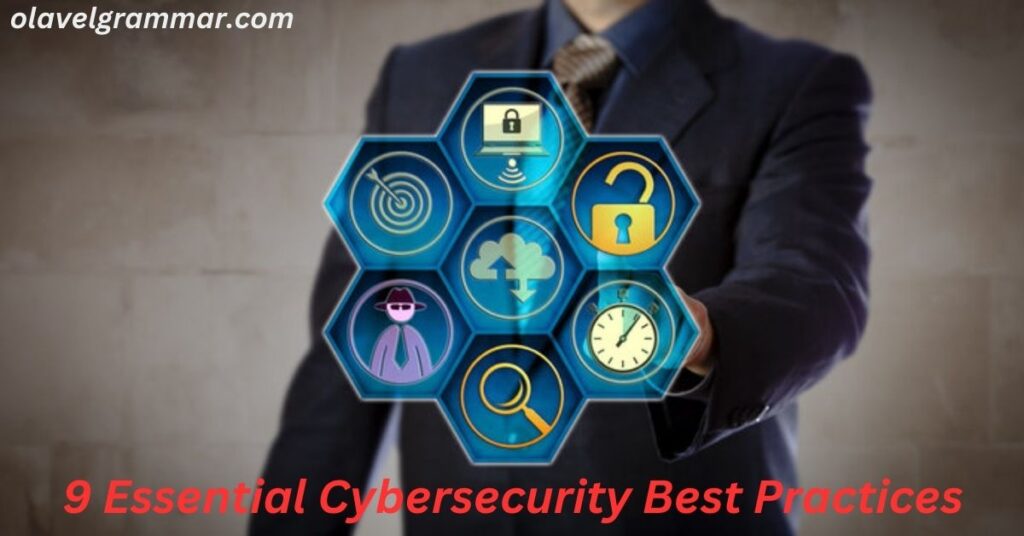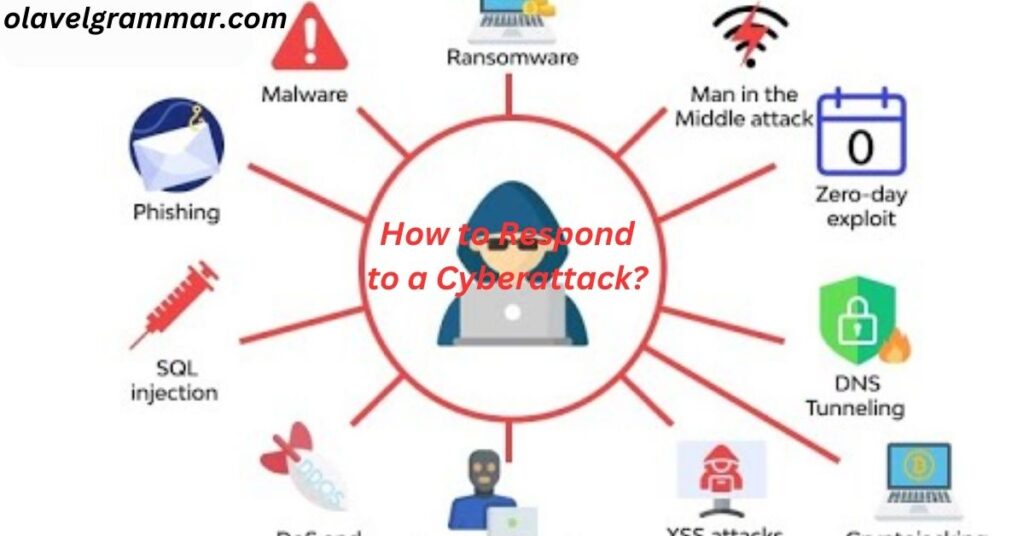In today’s digital landscape, cybersecurity best practices is a critical necessity for businesses of all sizes. Cybercriminals are becoming more sophisticated, using phishing scams, ransomware, and malware to exploit vulnerabilities. Without strong cybersecurity measures, companies risk data breaches, financial losses, and reputational damage.
The financial impact of cybercrime is staggering, with costs projected to increase by $6.4 trillion between 2024 and 2029 (Statista). This highlights the urgency for businesses to implement robust security practices to protect sensitive information and prevent costly breaches. A single cyberattack can disrupt operations, compromise customer data, and erode trust, making prevention essential.
This guide will explore the top cybersecurity best practices to safeguard your company. From implementing strong password policies and multi-factor authentication to regular system updates and employee training, these measures help reduce risks and enhance security. Businesses must also invest in threat detection tools, data encryption, and incident response plans to stay ahead of evolving threats.
What is Cybersecurity?
Cybersecurity is the practice of protecting computer systems, networks, and sensitive data from unauthorized access, cyberattacks, and damage. As technology advances, cybercriminals develop sophisticated techniques to exploit vulnerabilities, steal information, and disrupt operations. This makes cybersecurity an essential part of modern business strategies.
Common threats include phishing scams, ransomware, malware, and hacking attempts, all designed to compromise data security. A successful attack can result in financial losses, legal consequences, and reputational damage, impacting businesses and individuals alike.
To combat these risks, organizations must implement strong cybersecurity measures such as firewalls, encryption, multi-factor authentication, and regular security audits. Employee training is also crucial, as human error remains a major vulnerability.
E-E-A-T
Cybersecurity requires first-hand experience and expertise to effectively safeguard systems from evolving threats. Professionals in this field possess deep knowledge of network security, threat detection, encryption, and risk management, gained through hands-on work, certifications, and real-world problem-solving. Their ability to implement security protocols, conduct vulnerability assessments, and respond to cyber incidents showcases their practical experience and expertise in protecting sensitive data.
Authoritativeness in cybersecurity comes from recognized institutions, industry leaders, and reputable organizations that set security standards and best practices. Trusted sources like NIST, CIS, and ISO provide guidelines to ensure data protection. Businesses and individuals should rely on proven cybersecurity frameworks and expert insights to defend against cyber threats. Trustworthiness is established through transparent security policies, compliance with regulations like GDPR and CCPA, and a commitment to ethical cybersecurity practices, ensuring users and businesses feel confident in their data protection measures.
Why is Cybersecurity Important?
Cybersecurity is essential for protecting personal, financial, and corporate data from cyber threats. Without strong security measures, businesses face risks like data breaches, financial losses, identity theft, reputational damage, and legal penalties. Implementing robust firewalls, encryption, employee training, and threat monitoring helps prevent cyberattacks and ensures data integrity and compliance.
>Financial Loss: Data breaches and ransomware attacks can cost companies millions in damages.
>Reputation Damage: Customers lose trust in companies that fail to protect their data.
>Legal Consequences: Many countries have strict data protection laws like GDPR and CCPA, requiring businesses to secure user data.
>Operational Disruptions: Cyberattacks can bring business operations to a halt, affecting productivity and revenue.
9 Essential Cybersecurity Best Practices

1. Implement a Robust Cybersecurity Strategy
A well-structured cybersecurity strategy helps businesses stay ahead of cyber threats. Conduct a cybersecurity audit to assess existing security measures and identify vulnerabilities. A strong cybersecurity plan should include:
- Multi-layered security protocols to protect networks and systems.
- Regular risk assessments to identify and fix weaknesses.
- Employee awareness programs to educate staff about potential threats.
🔹 Example: A financial services company conducted a cybersecurity audit and found outdated firewall settings. After updating them, they prevented a potential cyberattack.
2. Update and Enforce Security Policies
Businesses must update security policies regularly to combat evolving cyber threats. Policies should include password management, data encryption, employee training, access controls, incident response plans, software updates, and multi-factor authentication.
- Data access control: Restrict sensitive information access to only essential personnel.
- Device management: Enforce security on company devices, including remote work setups.
- Incident response plans: Prepare a clear action plan for security breaches.
🔹 Best Practice: Implement a Zero-Trust Security Model, which requires continuous verification before granting access to systems or data.
3. Keep Software and Systems Updated
Outdated software exposes systems to cyber threats due to unpatched vulnerabilities. To minimize risks, enable automatic updates, regularly patch software, replace unsupported programs, and monitor for security updates from trusted vendors.
>Enable automatic updates for operating systems, apps, and antivirus software.
>Regularly patch security flaws in software and plugins.
>Conduct vulnerability testing to detect weaknesses before attackers do.
🔹 Case Study: The infamous Equifax data breach (2017) happened because the company failed to patch a known security vulnerability, exposing 147 million customer records.
4. Use Strong Passwords & Multi-Factor Authentication (MFA)
Weak passwords make systems vulnerable to breaches. Businesses should enforce complex passwords, require multi-factor authentication (MFA), implement password managers, set expiration policies, and educate employees on password security best practices.
>Use 12+ character passwords with a mix of uppercase, lowercase, numbers, and symbols.
>Implement multi-factor authentication (MFA) to add an extra security layer.
>Store passwords securely using password managers like LastPass or Bitwarden.
🔹 Example: A marketing agency switched to MFA for all accounts and saw a 75% drop in unauthorized login attempts.
5. Train Employees in Cybersecurity Awareness
Employees should be trained to recognize phishing attempts, avoid suspicious links, use strong passwords, follow security protocols, report threats immediately, and stay updated on the latest cybersecurity best practices.
- Identify phishing emails and social engineering attacks.
- Avoid downloading suspicious attachments or clicking on unknown links.
- Use company-approved security tools for communication and file sharing.
🔹 Tip: Run simulated phishing tests to see how employees react to fake cyber threats and improve their awareness.
6. Conduct Regular Cybersecurity Audits
Regular cybersecurity audits should include risk assessments, vulnerability scans, compliance checks, access control reviews, incident response evaluations, penetration testing, and employee security awareness training to ensure strong protection against evolving cyber threats.
>Penetration testing: Ethical hackers test your system for vulnerabilities.
>Compliance checks: Ensure security measures meet GDPR, HIPAA, or CCPA standards.
>Log monitoring: Analyze system logs to detect suspicious activities.
🔹 Industry Best Practice: Businesses handling sensitive customer data (like healthcare or finance) should conduct bi-annual security audits.
7. Restrict Access to Sensitive Data
Not every employee needs access to all company data. Use role-based access control (RBAC) to:
>Limit access to only authorized personnel.
>Implement temporary access controls for third-party vendors.
>Monitor access logs to detect unauthorized entry attempts.
🔹 Case Study: An e-commerce company reduced internal fraud by 50% by restricting access to financial records to only senior executives.
8. Monitor Third-Party Vendors & Applications
Third-party apps and vendors can introduce security risks. Protect your business by:
>Verifying third-party security practices before granting access.
>Using contract agreements that require vendors to follow cybersecurity policies.
>Monitoring API integrations to detect suspicious data-sharing activities.
🔹 Real-World Example: The Target data breach (2013) occurred because a third-party HVAC vendor had weak security, leading to 40 million credit card details being stolen.
9. Encourage Ongoing IT Security Training
Cybersecurity is constantly evolving, and employees need continuous training to stay informed about:
>New cyber threats and attack methods.
>Company security policies and updates.
>Best practices for data protection.
🔹 Best Practice: Provide monthly cybersecurity workshops and send out security newsletters to keep employees updated.
How to Respond to a Cyberattack?

Even with strong cybersecurity measures, breaches can still happen. If your business is attacked, follow these steps:
1️⃣ Isolate the affected system to prevent further damage.
2️⃣ Alert the IT security team to investigate and contain the threat.
3️⃣ Notify relevant authorities (if legally required).
4️⃣ Inform affected customers if their data was compromised.
5️⃣ Review and strengthen security measures to prevent future incidents.
Final Thoughts: Stay Ahead of Cyber Threats
Cybersecurity is a continuous effort that demands constant vigilance, regular updates, and employee training. Businesses must adopt proactive security measures to safeguard sensitive data, prevent cyber threats, and maintain customer trust. Implementing key cybersecurity best practices—such as strong password policies, multi-factor authentication, and regular software updates—significantly reduces the risk of attacks.
Employee awareness is crucial, as human error is a leading cause of security breaches. Conducting regular training sessions on phishing scams, social engineering, and safe browsing habits strengthens an organization’s defenses. Additionally, businesses should back up critical data, use advanced threat detection tools, and restrict access to sensitive information based on job roles.
As cyber threats continue to evolve, staying informed about the latest security trends is essential. Investing in robust security frameworks, conducting routine system audits, and establishing an incident response plan can enhance business resilience against attacks. Collaboration with cybersecurity experts and compliance with industry regulations further strengthen defenses.
FAQs
1. What is the most common cyber threat?
Phishing attacks are the most common, tricking users into revealing sensitive information via fake emails or websites.
2. How often should companies conduct cybersecurity audits?
At least once a year, but businesses handling sensitive data should conduct audits twice a year.
3. What industries are most at risk for cyberattacks?
Finance, healthcare, retail, and government sectors are top targets due to the large amount of sensitive data they store.
4. What’s the best way to train employees on cybersecurity?
Use regular workshops, simulated phishing tests, and security newsletters to keep employees updated.
5. Should small businesses worry about cybersecurity?
Yes! 43% of cyberattacks target small businesses, as they often have weaker security measures.
Read More…Lync Conf Game Modifications
Read More…Game Hacking with Lync Conf
Read More…TechCrunch disruptive